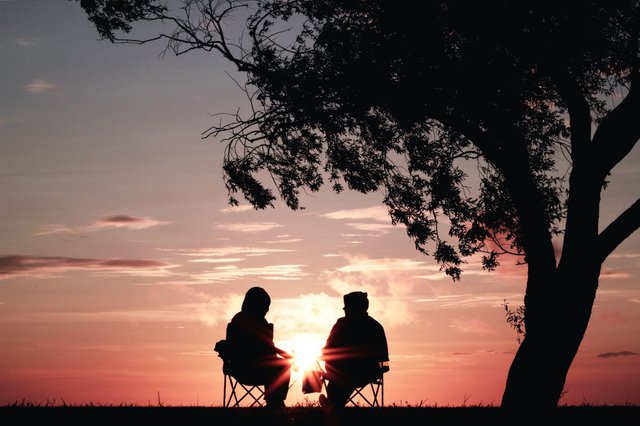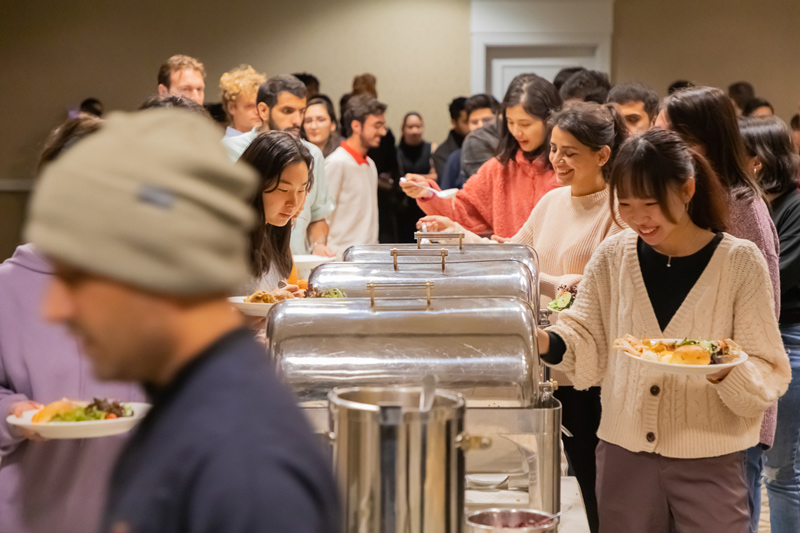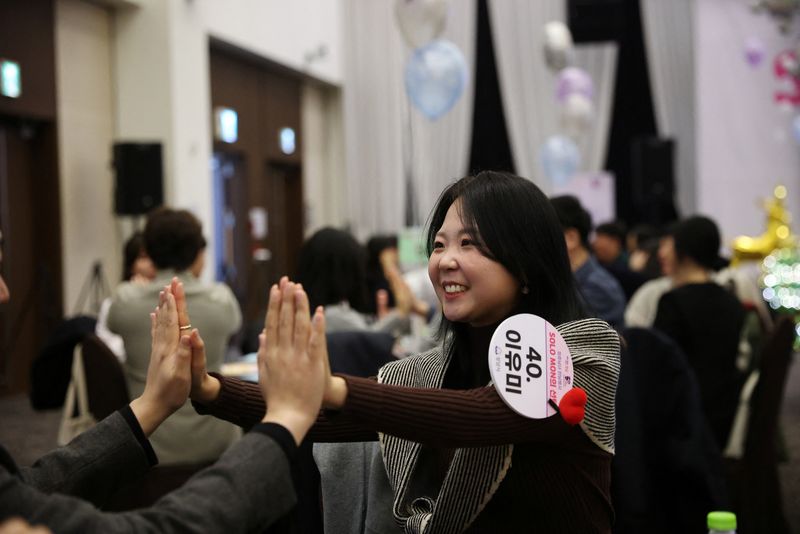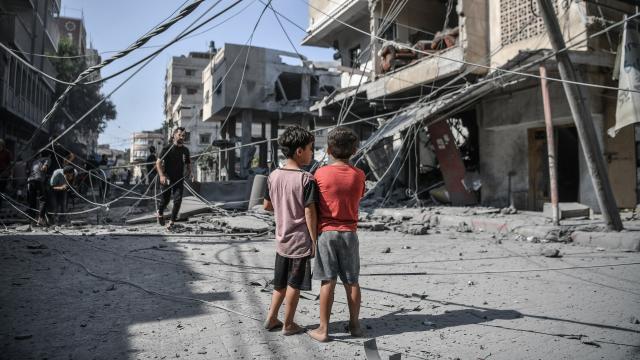뉴스&스피킹(영자신문)
하루 10분이면 영어에 대한 두려움을 극복하고 누구나 유창하게 영어를 구사하실 수 있습니다.
-
 US Life Expectancy Rises after Drops Linked to COVID-19 Life expectancy in the United States rose by about one year in 2022 following earlier decreases linked to the COVID-19 pandemic.
US Life Expectancy Rises after Drops Linked to COVID-19 Life expectancy in the United States rose by about one year in 2022 following earlier decreases linked to the COVID-19 pandemic.
Life expectancy predicts the average number of years a baby born in a given year can expect to live. Federal data showed that in 2022, U.S. life expectancy rose from 76.4 years to 77.5 years.
Researchers from the U.S. Centers for Disease Control and Prevention said 2022’s increase came largely because of disappearing COVID-19 cases.
For many years, life expectancy for Americans generally rose a little bit nearly every year. But about 10 years ago, the rate flattened and even decreased in some years. Those drops were blamed on drug overdose deaths and suicides.
The number of U.S. suicides reached an all-time high last year, a separate CDC report found. The national suicide rate also saw its highest level since 1941. U.S. drug overdose deaths rose slightly in 2022 after much larger increases during the COVID-19 pandemic.
During the pandemic, U.S. life expectancy dropped from 78 years and 10 months in 2019 to 77 years in 2020. Then, in 2021, the rate dropped further, to 76 years and 5 months.
Elizabeth Arias is a researcher for the CDC who worked on the latest report. She told The Associated Press the U.S. life expectancy rate was clearly hurt by COVID-19 and will take "some time before we're back to where we were in 2019.”
But Arias noted there were several favorable developments. For example, "all the groups by race and sex experienced increases in life expectancy," she said.
Steven Woolf, a life expectancy researcher at Virginia Commonwealth University, said he expects the U.S. to one day get back to pre-pandemic levels. But he added, “That is not a great place to be.”
Life expectancy in 2022 increased the most for American Indian and Alaska Native non-Hispanic newborns. The rate went from 65.6 to 67.9, followed by an increase of 2.2 years for Hispanic newborns, from 77.8 to 80.
The life expectancy for Black non-Hispanic Americans increased by 1.6 years, from 71.2 to 72.8. Researchers noted that people in that group were more severely affected by the COVID-19 pandemic.
Life expectancy increased by 1 year for Asian non-Hispanic babies to 84.5 years, and by 0.8 years for White non-Hispanic babies, to 77.5.
Life expectancy in the U.S. remains longer for females. In 2020, the difference between the two sexes reached 6 years, a level not seen since 1996. In 2022, the difference narrowed to 5.4 years, down from 5.8 years in 2021.
Life expectancy in the U.S. continues to be lower than that of numerous other countries. And the latest report shows that the U.S. did not rebound as quickly after the pandemic as some other countries, including France, Italy, Spain and Sweden.
I’m Bryan Lynn.View -
 International Students in US Experience American Holidays Researchers report that more than one million foreign students attended college or university in the United States last year. The data comes from the government-supported study called Open Doors Report on International Educational Exchange.
International Students in US Experience American Holidays Researchers report that more than one million foreign students attended college or university in the United States last year. The data comes from the government-supported study called Open Doors Report on International Educational Exchange.
Nearly one-third of those students were studying in the U.S. for the first time.
Just as they are getting comfortable with their classes, classmates, professors and speaking English full-time, school stops for three major American holidays: Thanksgiving, Christmas and New Year’s.
What do students do when their routine gets interrupted? VOA Learning English recently spoke with a number of international students to find out.
Thanksgiving
Most universities take a short break so students can celebrate Thanksgiving, which falls on the fourth Thursday of November.
American students leave school for four or five days to spend time with their families. But international students do not often have the money to travel home during breaks, so they find themselves on an empty campus.
Lucky ones, however, get to experience the holidays with Americans. Aimee Sanata is from the Dominican Republic. She is studying at the English Language Center at Old Dominion University in Norfolk, Virginia.
Sanata celebrated the holiday with her boyfriend’s family. Before the break, she watched some videos on YouTube to learn about the history of the holiday.
“The videos are created for children, so there they explain everything clearly so that anybody can understand it,” she said.
First taste of turkey
Many international students say they are excited to celebrate an American Thanksgiving because they have never tasted turkey. Turkeys are large birds mostly raised on farms. Some can weigh more than 10 kilograms. They can take three to five hours to cook.
Sarah Mannix is one of the English instructors at Old Dominion University. She knows it can be difficult for students to find something to do during school breaks. So Mannix invited a number of her students to celebrate Thanksgiving with her.
“They were all really excited when we took the turkey out of the oven because they had never seen cooked turkey before,” she said. “Overall, I think they enjoyed it.”
In fact, one student has been in the U.S. for six years, but had never tried Thanksgiving turkey before this year.
Victoria Stepanyants grew up in Russia and the Mediterranean island of Cyprus. She studied at Johns Hopkins University in Baltimore, Maryland and is now in medical school in Cleveland, Ohio. So she has a lot of experience with the school holiday breaks.
She often spent Thanksgiving with other international students and friends. They did not usually prepare traditional foods. But this year was different.
“That was actually the first time that I've been to Thanksgiving, where the food was, like, ‘Thanksgiving food,’” Stepanyants said. “It was the food I expected to see based on the way the media covers American Thanksgiving.”
International students are not just at universities. Sofia Montanari is from Bologna, Italy and is in high school in the Midwestern state of Missouri. She said she knows sharing meals are a good way to connect with new people. So she brought food from Italy to the Thanksgiving she spent with an American family.
“I really like (the idea) that they show me some of their culture and I show some of mine back,” she said.
One part of the Thanksgiving culture she enjoyed was the idea of giving thanks. People often talk about what they are thankful for before the Thanksgiving meal.
“It’s always good to be thankful for what you have,” she said.
Long breaks, dark and cold days
After Thanksgiving, students get back to school to attend classes and take exams, but about three weeks later, another break starts. Most schools close from mid-December until the last week of January.
That long period was hard, at first, for Stepanyants. Cyprus has a warmer climate. She said the island has over 300 sunny days per year. Her experience in the U.S. was very different.
“As soon as it hit October, November,” she said, “the sunlight is gone. It gets colder. I think it’s automatically depressing for anyone who is not used to it.”
For international students, she said, it is important to maintain a regular schedule and spend time with people.
International students should speak up if they are concerned about being lonely during school breaks. For Stepanyants, such discussions came naturally as she got to know other international students. At that point, they would make plans to spend time together during the breaks.
When she lived in Baltimore, she would take day trips with other international students to nearby cities such as Washington, D.C. and Philadelphia, Pennsylvania.
Sometimes, Stepanyants said, the breaks can be boring. But if students talk about their concerns they can make plans.
“If you have other international student friends, it's good to just bring it up because they end up in a similar situation then actually, like, the long breaks can be a lot of fun.”
At Miami University in Oxford, Ohio, the campus is closed during the last week of December. But international students are permitted to stay in their rooms during the winter break.
Dan Sinetar is a part of the staff that works to help international students feel at ease. He said people who live close to the university can take part in a program to make tasty “holiday treats” for international students.
Students who are staying at the university during the break can also take short winter term classes.
Stepanyants said, students should be sure to talk with someone at their university’s international student office about activities for the holidays such as Christmas and New Year’s during the long breaks.
“For example, at my school, they would sometimes do whole celebrations that international students could come to and just like have events over the long breaks for people to not feel super isolated, which was nice.”
Visitors from home and trips to see family
Students at Montanari’s school are not permitted to stay on the campus during Christmas break. They have to make other plans. Last year, her parents came to visit the U.S. for two weeks. They visited New York and Washington, D.C. together. They also spent some time in the town where Sofia attends school.
The rest of the break Sofia spent with a host family.
Stepanyants, the medical student, has a younger sister who is attending college in the U.S. In recent years, they have been able to see each other during breaks, which makes them both feel better and less lonely.
Other students do make it back home. Sanata is traveling to the Dominican Republic for Christmas break because her brother is getting married. She is thankful because she misses her family so much. She said she also misses speaking Spanish.
For students who cannot get home, they try to stay connected to family. New Year’s is the most important winter holiday for Stepanyants. When she could not get home, she would have meals with her family by video call after cooking traditional foods.
“It’s a very huge meal that you cook all day. And presents happen on New Year’s too. Then, there are fireworks,” she said.
I’m Dan Friedell. And I’m Gena Bennett.View -
 It's Time to 'See the Light' And now, Words and Their Stories, from VOA Learning English.
It's Time to 'See the Light' And now, Words and Their Stories, from VOA Learning English.
In many places, the holiday season in December can be a magical time. During this month, many cultures celebrate with festivals of lights. From Amsterdam in the Netherlands to Sydney, Australia; from Lyon, France to many cities in Japan -- lights are used to lift the spirits and to celebrate.
So, today we will talk about a few expressions that use the word “light.”
The first is to be a beacon of light. A beacon of light gives hope and happiness to others. If you have ever been called a beacon of light, take it as a big compliment. A person who is a beacon of light makes things better for everyone around them. A beacon of light can be a person who helps guide others to safety, much like a lighthouse does for ships and boats.
These people can even cast light on the darkness in our lives. When we cast light on something, we make it better. The expression can also mean that we explain something more fully or expose some unknown parts of an issue or problem. Some people like to say, “Let me cast a little light on the subject,” before they explain something.
After someone casts light on a complex or difficult issue, you might begin to see the light. If you see the light, you understand something. Often, you have realized a difficult truth. For example, years ago my friend refused to believe that her boyfriend had a drinking problem. But when he was arrested for drunk driving, she began to see the light. She got him help and now he has been alcohol-free for many years. So, he saw the light, too.
This expression is very different from seeing the light of day --although they sound similar.
When something sees the light of day, it is made available to others. For example, some people write stories and poems. But these works never see the light of day. They stay hidden in a desk drawer or notebook.
To see the light of day can also mean to be born or to come into existence. Let’s say you worked on a big project for many months or even years. You will probably feel very excited when it finally sees the light of day.
Now, let’s talk about “bad light.”
Bad lighting can make even the most beautiful person look bad in a picture or video. So, it is not surprising that seeing something in a bad light means to form a bad opinion of something or someone.
Sometimes our habits and attitudes can be seen in a bad light. For example, a scientist was seen in a bad light by her coworkers. They said she was not a team player.
Now, let’s hear these some of these expressions used in a discussion between two friends.
A: Wow, you look awful. Are you sick?
B: No. I haven’t slept in a week.
A: Why? What’s wrong?
B: My roommate started playing the bag pipes. They are SO loud. And she plays late at night!
A: The bag pipes?! Oh, that’s too bad. Well, have you told her to stop?
B: No. She’s a really nice person. So, I don’t want her to see me in a bad light. I mean, we all do annoying things, right?
A: Yes. But, we all don’t play the bag pipes late at night. Look, you need to do something. You need your sleep! You could hide her bag pipes. Hide them somewhere so they will never see the light of day again!
B: You are so mean! But you are also right. I’m beginning to see the light. I’ll say something later. But for now (yawn) can I crash on your couch. I’m beat!
And that’s the end of this Words and Their Stories. Until next time … I’m Anna Matteo.
Anna Matteo wrote this lesson for VOA Learning English.View -
 South Korean City Turns to Matchmaking to Increase Low Birth Rates While Christmas music played, 100 South Korean men and women gathered at a hotel near the capital of Seoul with their names written for others to see.
South Korean City Turns to Matchmaking to Increase Low Birth Rates While Christmas music played, 100 South Korean men and women gathered at a hotel near the capital of Seoul with their names written for others to see.
They were hoping to find love. The government hopes they will make babies.
The young men and women were at a blind dating event held by the city of Seongnam. Blind dating is when two people who do not know each other meet in hopes of forming a relationship.
The local government is attempting to fight the falling birth rate in a country where the popularity of marriage and parenthood has fallen.
Those who joined were in their 20s and 30s. They sat quietly next to one another until a relationship expert started the event with a game called rock-paper-scissors. People soon began to talk and laugh.
The city appeared set on making a match. It prepared food and drinks like red wine and chocolate. There were also games, free beauty services, and even services to look into people’s backgrounds for the singles that joined.
Lee Yu-mi is 36 and works for the city government. She said she registered to join three times before she was finally accepted to join the event.
"I had no idea it would be this competitive," she said.
After five such gatherings this year, 198 people among 460 left the event as “couples”, agreeing to exchange contact information, the city said.
The South Korean capital Seoul had considered a similar event but put the plan on hold after facing criticism. Some said the event was a waste of taxpayers’ money and it failed to deal with the reasons people were choosing to not marry and have babies. Those reasons include the high costs of housing and education.
Hwang Da-bin took part in a September event. He said it saved him the cost of joining other social events or signing up for professional match-making services.
"We are facing a real demographic crisis and the government needs to do whatever it can. I don't understand people complaining over this," Hwang said.
The average number of children born to each South Korean woman, called the fertility rate, fell to 0.78 last year. The country has the lowest fertility rate in the world.
The number is far below 1.66 in the United States and 1.3 in Japan in 2021. The average rate among countries in the Organization for Economic Co-operation and Development, a group of 37 democracies with market economies, was 1.58 that same year.
Jun Jae-hoon teaches social welfare at Seoul Women’s University. He said it was “nonsense” to expect these events to lead to higher birth rates.
"You need to spend more money directly on supporting pregnancy, child delivery and parenting to call it a policy…” to increase birth rates, Jung said.
But even with criticism, thousands of people have signed up for this year’s blind-dating events held by the Seongnam city.
Seongnam Mayor Shin Sang-jin said spreading good views on marriage would at some point help raise the birth rates. He said that the blind-dating events are just one of many policies his city has created to deal with the falling rates.
“Low birth rates cannot be resolved with a single policy,” Shin said. “It's also the city's job to create the environment for people who want to marry find their partners.”
I’m Gregory Stachel.View -
 Deal Reached to Extend Cease-fire in Israel-Hamas War Negotiators have reached a deal to extend a cease-fire between Israeli and Hamas forces in Gaza.
Deal Reached to Extend Cease-fire in Israel-Hamas War Negotiators have reached a deal to extend a cease-fire between Israeli and Hamas forces in Gaza.
A Qatari official announced Monday on the social media service X the agreement would continue an existing truce for another two days. Qatar and Egypt have led the negotiations surrounding the ongoing conflict.
The new deal came on the final day of a four-day ceasefire. Negotiators said they were also preparing for new exchanges of hostages and prisoners.
Israel had no immediate comment on the new truce. But Israeli officials had said the country would be open to extending the cease-fire by one day for every 10 additional hostages released. Hamas confirmed it had agreed to a two-day cease-fire extension.
Hamas freed 17 more hostages on Sunday – 14 Israelis and three Thais – in a third exchange under the earlier four-day truce. Israel released 39 Palestinian prisoners in the latest exchange.
About 240 hostages were captured by Hamas in its October 7 attack in southern Israel that started the war. So far, 62 hostages have been released. One was freed by Israeli forces and two were found dead inside Gaza. At least 117 Palestinians were freed under the latest truce.
An Israeli government spokesperson said the total number of hostages still held in Gaza as of Monday was 184. This included 14 foreigners and 80 Israelis with dual nationality.
Last week’s cease-fire agreement – which was set to end Monday night – brought the first halt in fighting between Israel and Hamas in Gaza.
The Hamas-controlled Health Ministry in Gaza says more than 13,300 Palestinians have been killed since the start of the war, many of them women and children. The ministry does not differentiate between civilians and military-force deaths.
Israeli officials have said about 1,200 people have been killed in Israel, mostly during the first attacks by Hamas. At least 77 soldiers have been killed in Israel’s ground offensive in Gaza.
An Egyptian official told Reuters news agency the new truce would permit the release of about 20 Israeli hostages in exchange for 60 Palestinian prisoners held in Israeli jails.
The European Union's foreign policy chief, Josep Borrell, told reporters he hopes a truce extension will permit the international community to work on a lasting political solution.
Israeli Prime Minister Benjamin Netanyahu has said the country planned to push ahead with the war at the end of the cease-fires.
Wide areas of Hamas-ruled Gaza have been destroyed by Israeli air strikes and bombings. The war also led to a humanitarian crisis because of shortages of food, fuel, water and medicine.
The latest truce did lead to some increased shipments of fuel and supplies into Gaza. But aid groups say much more is needed to help the immediate needs of the 2.3 million Palestinians there.
I’m Bryan Lynn.View

